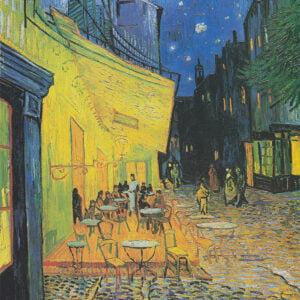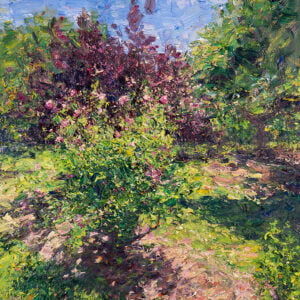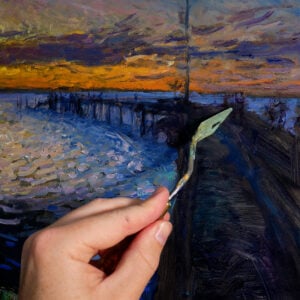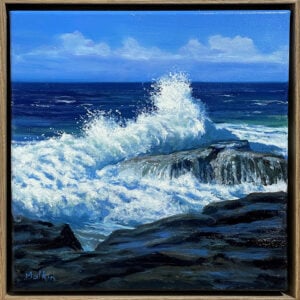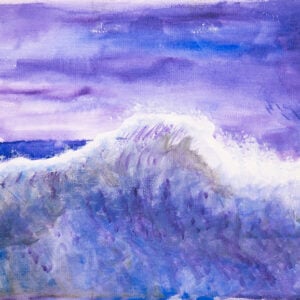Pattern refers to the visual arrangement of elements in some kind of sequence or repetition.
Think of a line of trees, a floral dress, the design of a flower, the back-and-forth sway of the ocean. Patterns are all around us. Though some are more obvious than others. In this post, I cover:
- Tips for Using Pattern in Art
- Pattern Examples
- Additional Resources
- Want to Learn More?
- Thanks for Reading!
Tips for Using Pattern in Art
- Often, less is more. Subtle patterns can be more effective than obvious ones.
- Make sure your patterns look natural.
- Make sure your patterns fit with the rest of the painting.
- Look for patterns that already exist in your subject. Exaggerate those patterns if it works. But be careful about artificially creating patterns.
Pattern Examples
Alfred Sisley’s The Seine at Suresnes: Notice the organic patterns in the clouds.

Anders Zorn’s A Girl With a Dog: There are artificial patterns all throughout the beautiful fabrics.

Same with Zorn’s Castles in the Air.

Charles Cottet’s Rayons Du Soir: There’s pattern in the repetitive shape and arrangement of the boats. Also, notice the subtle patterns in the water.

Claude Monet’s Japanese Bridge: There are subtle patterns all throughout this painting-the vertical strokes for trees and plants, the horizontal strokes for waterlilies and flowers, the inherent pattern of the bridge, the dance between water and water lilies.

Edgar Payne’s Alpine Lake: Payne relies heavily on shape in his paintings and this results in many interesting and pronounced patterns.

Edouard Manet’s The Rue Mosnier With Flags: There are patterns in the arrangement of flags, the flags themselves, the fence posts and their shadows, and the rigid architecture.

Gustav Klimt’s Kiss: Pattern is a key feature of this painting and much of his other work.

John Singer Sargent’s The Athenaeum, Mountain Waterfall: The water pools, falls, crashes, and pools again. Nature is filled with all kinds of wonderful patterns like this.

Vincent van Gogh’s The Starry Night: Perhaps the most striking example of pattern, with its swirling, dramatic lines.

Additional Resources
Visual Elements – The Building Blocks of Painting
Want to Learn More?
You might be interested in my Painting Academy course. I’ll walk you through the time-tested fundamentals of painting. It’s perfect for absolute beginner to intermediate painters.
Thanks for Reading!
I appreciate you taking the time to read this post and I hope you found it helpful. Feel free to share it with friends.
Happy painting!
Dan Scott

Draw Paint Academy

